Richard Harris's Blog, page 56
December 15, 2014
On More Suffering and Creativity
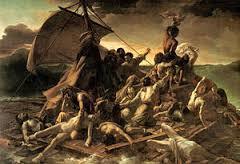
I’m not going to lie to you. I don’t usually get a lot of visitors to my site, mostly because people complain about the food. The drinks aren’t very good either.
I’m working on it, people! Just give me a little time!
In any event, it would appear my post on Elizabeth Gilbert’s TED talk on “Your elusive creative genius” sparked a lively online conversation these past few days. This was crystalized by an old friend who contacted me out of the blue and wrote:
Did Elizabeth Gilbert ever confess that her creativity went down when her books became bestsellers? You see my point, right? Do not get hypnotized by the suffering-creativity nonsense. Pain is inevitable, but suffering is optional.
Ms. Gilbert asked a hypothetical question near the beginning of her talk on behalf of non-artists everywhere who wonder why so many famous artists kill themselves: Must artistry lead to anguish?
I think this missed the more important point, which is that great creativity is sparked by an individual’s ability to revisit, draw on, and harness an excruciating memory of when they suffered greatly. It’s not that creating art necessarily leads to suffering. Rather, it fuels the fire which unlocks the invisible catalyst of creative genius.
Revisiting the past is difficult even for the strongest of us. If we don’t carry out this act from time to time, however, we not only neglect the chance for spiritual growth, but miss out on the opportunity to produce something glorious from it.
So why this time have I chosen Géricault’s epic Raft of Medusa painting at the top of this post? I’ve been very fortunate to see the painting in person and it had a visceral effect on me. Why, indeed, would someone paint what appears to be hell on earth for nothing more than viewers’ aesthetic pleasure? Maybe Géricault tried to imagine the suffering of those wretched French sailors. Then again, maybe he connected with their suffering on such a profound level that the feeling inspired him to create what is now ironically seen as a seminal work of French Romanticism.

December 13, 2014
A Bedazzling Catch-22 of Malapropisms

For all of you word nerds out there, The Guardian published an interesting piece not long ago on English words invented by some pretty famous authors.
You can read the full article here.

November 29, 2014
On Suffering and Creativity
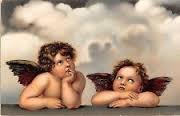
In February 2009, Elizabeth Gilbert, famed author of the international bestseller Eat, Pray, Love, gave a TED talk entitled “Your elusive creative genius.” I remember watching it shortly after it came out and scratching my head; I simply couldn’t understand what she was getting at. Suffering was “odious” as a means by which to achieve artistic insight? She went on to quote Norman Mailer, a writer whom I greatly respect, and question his now-famous quote: “Every one of my books…killed me a little more.”
I’ve wanted to address this TED talk for a while, but only recently found the impetus to put (computer) pen to (computer) paper after watching her second TED talk, “Success, failure and the drive to keep creating.” Even those who are not writers or artists can surely think of countless times when tragedy served as the flavour of the day, hardship the currency by which they bartered with between and among loved ones. It’s precisely those times which define us as individuals, illuminate for everyone all around what we’re made of, and strengthen our ability to adapt to this gong show called life.
I can’t speak for anyone else, but there is no doubt in my mind that pain, suffering and the universal human condition have been pillars of creative genius for time immemorial. Rejection, loss, hurt, sickness — they’ve all contributed to people’s creativity over the ages. I think of writers like Fyodor Dostoyevsky scrambling to write The Gambler and pay off his debts before going bankrupt and forfeiting his entire literary earnings for nine years; of Murakami Haruki going into self-imposed exile to deal with his newfound fame (from Norwegian Wood) and writing The Wind-up Bird Chronicle, a book which he later claimed had taken every ounce of strength he had and very nearly broke him; of David Mitchell having his first novel rejected across the board by agents and bouncing back to write Ghostwritten; of Sylvia Plath writing one of the most seminal works of fiction on mental illness while suffering from a crippling case of the very same disease; and of a 25-year-old Norman Mailer returning to the U.S. after WW II, the horrors he witnessed in the Pacific Campaign still fresh in his mind, only to go on to publish The Naked and the Dead three years later.
As those writers I’ve just mentioned show, suffering (in any of its varied forms) can, but does not necessarily, open the door to achieve greatness in a creative manner. Ultimately, however, the burden falls on us as individuals to seize upon these painful moments of our lives and to draw something from them other than misery.
So why the picture of Raphael’s cherubs staring at the Sistine Madonna at the top of this post, you might ask? For me, something about the artwork captures the essence of eternal hope. It also makes me think of one of my favourite quotes from the Bible, John 1:5, and something I think about a lot when in the doldrums of my own suffering: “The light shines in the darkness, and the darkness has not overcome it.”

November 18, 2014
NYT Pulp Fiction Contest
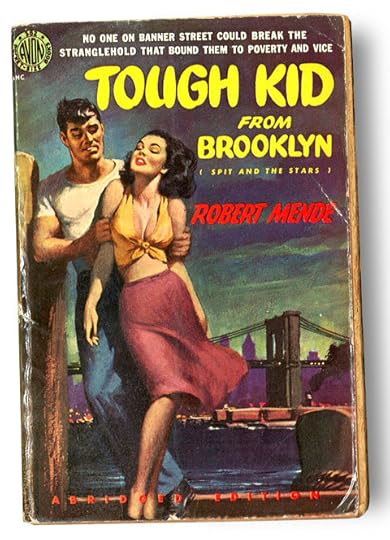
So the New York Times has a contest running that ends at 11:59 p.m. Eastern Standard Time on Friday, Nov. 21. You have to write up to 150 words in “pulp fiction style” for the opening of the 1951 magazine cover as seen above.
Here’s my entry for the contest.
Dirk Luger looked down the far end of Banner Street with slits for eyes as thin as a stiletto. He didn’t trust no one, specially the three punks hanging fast and loose on the corner of East 12th. Ain’t no matter, he told himself, ’cause Dirk Luger had been in plenty of tight spots. Not just in Brooklyn but in the service. Pacific Campaign. Now, a bunch of saps was looking to shake him down for all he was worth after snatching Veronica Lovecross from the office yesterday.
Big mistake on their part.
Just then two hatchetmen sashayed down the steps of a flophouse, Veronica Lovecross jammed between them, each tuckin’ iron between their trousers.
“Showtime,” Dirk Luger said in a low voice as he began marching forward, the punks set to meet their Maker, his new moll Veronica Lovecross about to see what a real man was made of.
Click here to go to the NYT page where you can submit your entry.


November 15, 2014
The Most Beautiful Literary Quote

I was curious recently which literary quote gets the nod for most searched or cited online. While this is obviously a subject that not everybody will agree upon, it seems the last paragraph of James Joyce’s “The Dead” (the final short story in his 1914 collection Dubliners) is the winner:
“A few light taps upon the pane made him turn to the window. It had begun to snow again. He watched sleepily the flakes, silver and dark, falling obliquely against the lamplight. The time had come for him to set out on his journey westward. Yes, the newspapers were right: snow was general all over Ireland. It was falling on every part of the dark central plain, on the treeless hills, on the Bog of Allen and, farther westward, softly falling into the dark mutinous Shannon waves. It was falling, too, upon every part of the lonely churchyard on the hill where Michael Furey lay buried. It lay thickly drifted on the crooked crosses and headstones, on the spears of the little gate, on the barren thorns. His soul swooned slowly as he heard the snow falling faintly through the universe and faintly falling, like the descent of their last end, upon all the living and the dead.”
I used to write down my favourite quotes as I read a book, but then I got old and lazy. And a little fat. And somewhat out of shape. Now I just rely on this interweb thingy called the INTERNET! Personally, the above quote doesn’t do much for me. As those who know me well can attest to, my favourite literary quote – and the only one I ever memorized – is from Michael Ondaatje’s The English Patient. It comes near the end, as the EP carries Katharine Clifton out of the cave and into the desert. I’d be interested to hear what other people consider the best/most beautiful piece of prose in the English language, but for me Ondaatje took his writing to new heights with this single paragraph:
“And all the names of the tribes, the nomads of faith who walked in the monotone of the desert and saw brightness and faith and colour. The way a stone or found metal box or bone can become loved and turn eternal in a prayer. Such glory of this country she enters now and becomes part of. We die containing a richness of lovers and tribes, tastes we have swallowed, bodies we have plunged into and swum up as if rivers of wisdom, characters we have climbed into as if trees, fears we have hidden in as if caves. I wish for this all to be marked on my body when I am dead. I believe in such cartography—to be marked by nature, not just to label ourselves on a map like the names of rich men and women on buildings. We are communal histories, communal books. We are not owned or monogamous in our taste or experience. All I desired was to walk upon such an earth that had no maps. I carried Katharine Clifton into the desert, where there is the communal book of moonlight. We were among the rumour of wells. In the palace of winds.”


November 5, 2014
Judging a Book by Its Cover
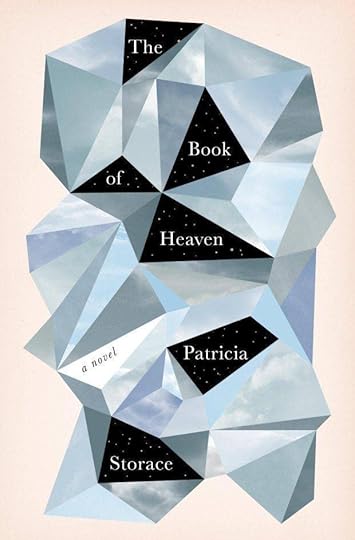
Sometimes a book cover is so arresting that you can’t help but pick it up and read the blurb on the back and/or a few pages of the story. Publishers know this all to well. And that’s because they know a secret: we as readers do judge a book by its cover, which is why they spend so much time and money on the design aspect of both fiction and non-fiction.
For me, the above book cover (designed by Linda Huang for Pantheon) is an example of this truism. The Globe and Mail did a piece on this today and provided some stunning pictures of book covers. To see more examples and read the full Globe article click here.


September 20, 2014
David Mitchell Answers Fan Questions
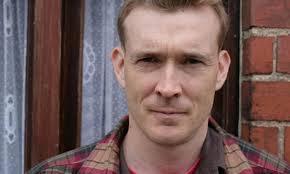
If you’re a regular to my site, you’ll know I have a soft spot for David Mitchell. His newest novel, The Bone Clocks, is officially on sale at bookstores now, and David recently answered some questions via Twitter, which Random House then posted on YouTube.
Although he’s replaced his kinda/sorta Seattle-inspired grunge look from his pre-Cloud Atlas days with a blazer and button-down, he’s still the same kick-ass guy when it comes to interviews and public speaking.
And for those of you who actually take an interest in the minutiae of editing fiction, check out David’s American editor, David Ebershoff, and his own amazing collection of writing.
Click here to see part 1 of 10 of Mr. Mitchell answering Twitterverse questions.


September 13, 2014
Which Classic Novel Describes Your Life?

Man alive, has literary cover art ever changed over the years!
So in the spirit of pure silliness and Facebook-driven drivel, I took this test, which is supposed to find the classic novel that best captures your spirit (i.e. your multiple choice answers). In my case, that’s apparently The Great Gatsby. It’s kind of funny, I guess, because I’m one of those rare people who really never liked Gatsby. This was the official analysis on me based on the test:
Romantic and driven by passion, your ups and downs are told within the pages of F. Scott Fitzgerald’s classic THE GREAT GATSBY! If one thing is true about you, it’s that your entire life has been a search for true love and the passion that true love brings. This, however, has led you down a bumpy road. You’re capable of making massive sacrifices for love, and are willing to do whatever it takes – no matter how crazy – to win the one you love.
Personally, I was always fascinated by Fitzgerald’s life more than his writing. A self-admitted alcoholic and “drunkard,” Fitzgerald lived a hard-drinking life that saw him famous by the 1920s, forgotten by the late 30s and dead by 1940 from alcohol abuse at the ripe old age of 44. As the man himself once said, “I have lived hard and ruined the essential innocence [sic] in myself that could make it that possible [sic], and the fact that I have abused liquor is something to be paid for with suffering and death perhaps but not renunciation.”
If you’re interested in seeing which classic novel best describes your life, Take the test here yourself.


September 3, 2014
Failure: The Price of Success
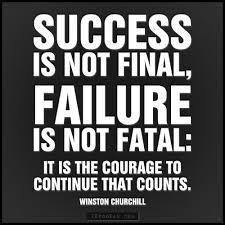
Recently, I read a thought-provoking piece in The New York Times on failure. It looked at how failure had such a different impact on people depending on the industry you worked in. For writers, as many writers themselves pointed out, it is crucial to the success of the craft.
But how does one absorb failure and not become bogged down in self-doubt and fear? It’s a good question and one which I still struggle with every day when I write and edit my own material.
For those of us who are overachievers and perfectionists (cough), failure is never an option in principle. When I completed my first book in 2000 and gave it out to friends for feedback, I was devastated to learn pretty much everyone thought it sucked the bag. Nice, I thought. You guys are all douchebags. Whatever.
Then I penned a second book. It also received a resounding Yaaaaawwwwnnnnn. Boring!
More douchebags. Obviously. My writing was far superior than their limited intellects could handle.
So I did what Junot Díaz once said:
“In my view a writer is a writer because even when there is no hope, even when nothing you do shows any sign of promise, you keep writing anyway.”
Failure sucks. Pure and simple. It makes us second-guess ourselves, and whether it’s being rejected on a date, being fired, or staring at a computer screen as a writer and watching the stupid cursor blink over and over like a dumbass playing a cruel joke on you, it’s a necessary part of success.
Personally, I’ve been rejected by agents and publishers alike for 14 years and still I soldier on. Today, my writing is better precisely because of this rejection and failure. Will I ever be published by one of the Big Five in New York? I’m not sure. What I do know is what Teddy Roosevelt said so eloquently a century ago about this very subject, and something I believe in wholeheartedly:
It is not the critic who counts; not the man who points out how the strong man stumbles, or where the doer of deeds could have done them better. The credit belongs to the man who is actually in the arena, whose face is marred by dust and sweat and blood; who strives valiantly; who errs, who comes short again and again, because there is no effort without error and shortcoming; but who does actually strive to do the deeds; who knows great enthusiasms, the great devotions; who spends himself in a worthy cause; who at the best knows in the end the triumph of high achievement, and who at the worst, if he fails, at least fails while daring greatly, so that his place shall never be with those cold and timid souls who neither know victory nor defeat.
Read the entire NYT piece here.


August 9, 2014
How Many Books Do You Read a Year?

So how many is it? One? Three? Ten? Do you read as many books a year as your age?
Well, if you read a single book (i.e one more than zero and one less than two) then you read more than almost a quarter of Americans. That’s right, Timmy! According to data from the Pew Research Center, 23% of Americans will not read one book or listen to one audiobook in 2014. That’s almost three times as many people as in 1978.
Who the what the France?
Now, for those of us who did actually digest the written word in some form over the last year, 31% of people read 1-5 books, 17% read 6-10 books, and 28% read 11 or more. So, in a nutshell, if you’re in a monthly bookclub, you read more than every single American put together. Ever. In the history of the world.
Or something like that. Stats weren’t always my thing.
Pew also discovered who exactly was reading based on socioeconomic data. If you’re wondering who reads the most, it’s a white female over the age of 30 who graduated from university, makes at least $50,000 a year, and lives in the country.
The lesson? If you’re a single male looking for a smart rich woman, move to Butthellnowhere, USA.
Read the full article I learned all this information from here in The Atlantic.





